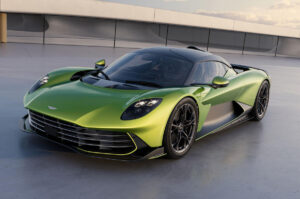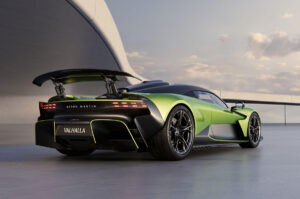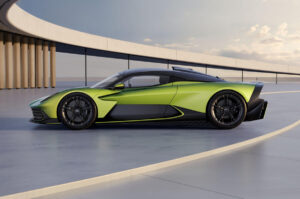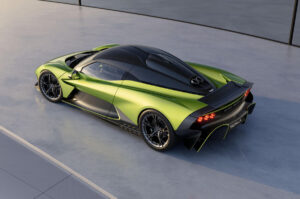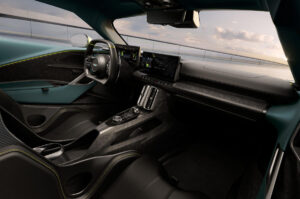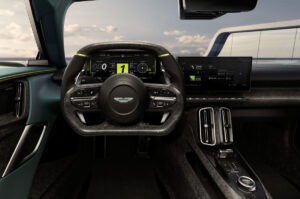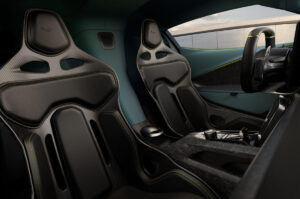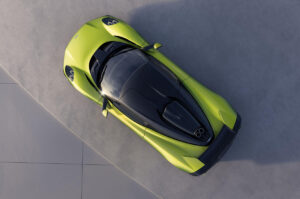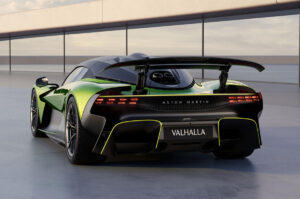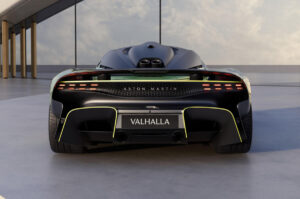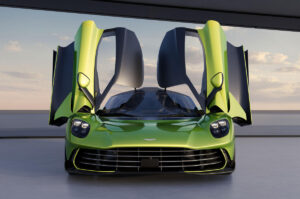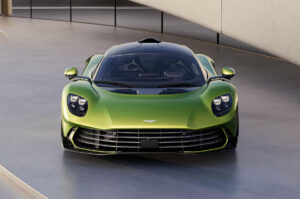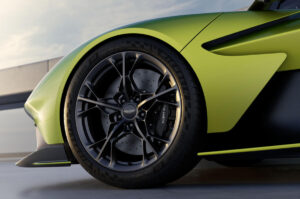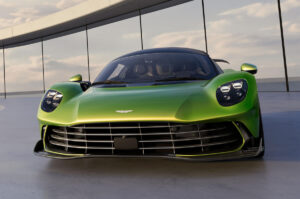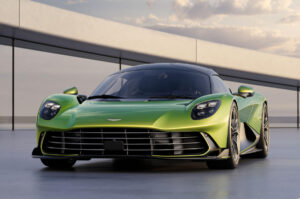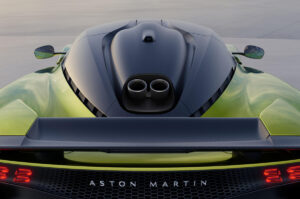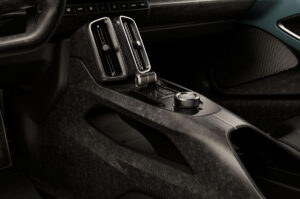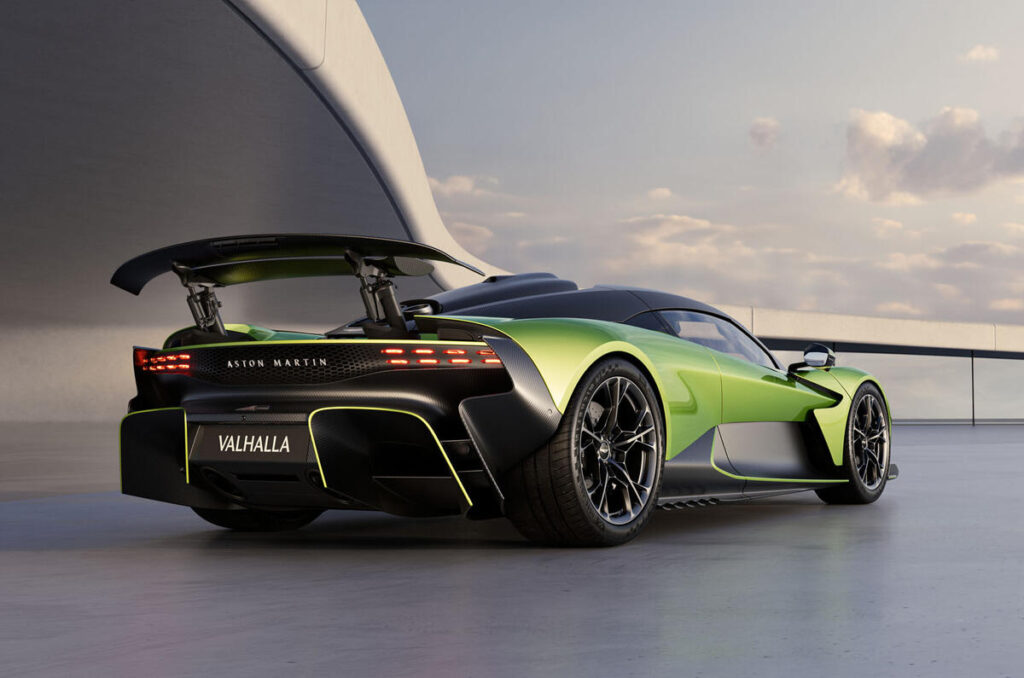
Aston Martin’s highly anticipated Valhalla supercar is finally official and will enter production in the second quarter of 2025.
Customers who have already placed their orders or paid deposits will be pleasantly surprised to see that it surpasses its initially promised power output and boasts the highest torque figure ever seen in an Aston Martin model.
Early estimates placed the Mercedes-sourced hybrid V8’s output at 1,000 hp (735 kW). However, with homologation now finalized, Aston has bumped that figure to a staggering 1,079 hp (811 kW), making it more powerful than the Lamborghini Temerario, McLaren Artura, and Ferrari 296 GTB.
The 4.0-litre AMG flat-plane-crank V8 contributes a substantial 817 hp (610 kW) to the total output. This is supplemented by an additional 248 bhp (185 kW) from a trio of electric motors – two radial-flux units on the front axle and a starter-generator integrated within the eight-speed automatic gearbox.
Combined, the powertrain delivers a mighty 1,097 Nm (811 lb-ft) of torque, exceeding even the Valkyrie.
Aston Martin claims the Valhalla will sprint from 0 to 100 km/h (62 mph) in a mere 2.5 seconds and reach an electronically limited top speed of 350 km/h (217 mph), placing it among the fastest combustion cars currently available.
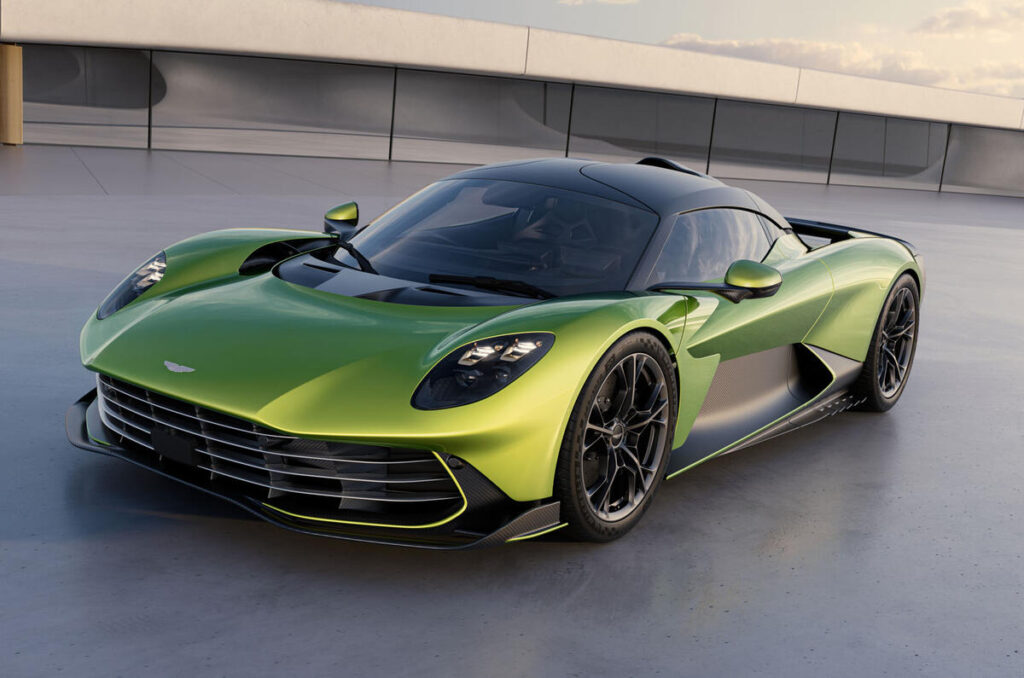
Production will be limited to just 999 units, with a starting price of £850,000. However, Aston anticipates a significant number of cars to go through its Q personalization program which will push the prices well above the base figure.
Unlike the 2019 concept, the production Valhalla ditches the originally planned bespoke Aston Martin-developed V6. Instead, it followed Aston Martin Vantage’s lead by adopting a powertrain supplied by technical partner Mercedes-AMG. The centrepiece is a specifically tuned, twin-turbocharged 4.0-litre V8 from the performance division. This high-revving engine sends power to the rear axle via a brand-new, bespoke eight-speed dual-clutch automatic gearbox.
Mirroring the AMG GT Black Series, the Valhalla’s V8 features a flat-plane crank and is proclaimed as “the most advanced, responsive and highest-performing V8 engine ever fitted to an Aston Martin.” It exhales through a lightweight exhaust system exiting atop the rear deck. This system features adjustable flaps that deliver “an authentic Aston Martin sound character.”
Housing the all-new powertrain is a bespoke carbon fibre tub, designed to deliver “maximum stiffness with minimum weight penalty.” This results in a dry weight of just 1655 kg, translating to a power-to-weight ratio of a staggering 643 hp (480 kW) per tonne. Aerodynamically optimized bodywork elements, including substantial venturi channels underneath and an active front splitter and rear wing inspired by the Valkyrie’s F1-derived setup, are claimed to generate a remarkable 600 kg (1,323 lb) of downforce at 241 km/h (150 mph).
Pushrod suspension is employed at the front, while a multi-link setup handles the rear. Dampers and springs are mounted inboard to minimize unsprung mass. The entire suspension system stiffens and lowers dramatically in Track mode, but it can be raised at low speeds for navigating obstacles.
Aston Martin’s designers, liberated by the use of subtler aerodynamic elements for downforce generation, crafted a cleaner and more road-focused silhouette for the production Valhalla. While the prominent roof scoop, forward-hinged dihedral doors, swooping rear deck, and one-piece rear wing remain, the Valhalla receives a completely new treatment for the front, rear, and sides.
Production-spec wheels measure 20 inches in diameter at the front and 21 inches at the rear, all wrapped in Michelin Pilot Sport Cup tyres.
Inside the Valhalla, Aston delivers a “pared back cockpit design with clear, simple ergonomics unashamedly focused around the driver.” This translates to a squared steering wheel, nearly identical to the Valkyrie’s, and a pair of screens for gauges and infotainment.
However, compared to its Valkyrie sibling, the Valhalla offers a more spacious and civilized cabin. This is achieved through features like an infotainment touchscreen with Apple CarPlay and Android Auto compatibility, dual-zone air conditioning, a rear-view camera, and a suite of advanced driver-assistance systems bolstering the car’s on-road practicality.

